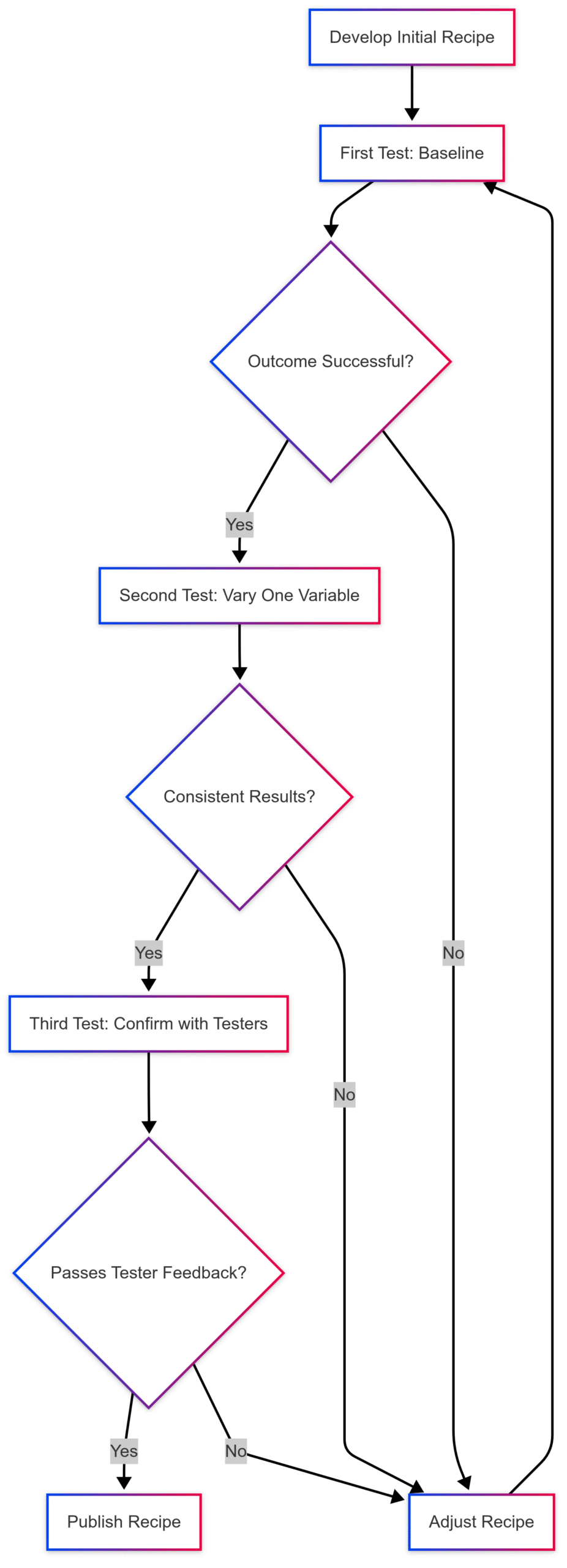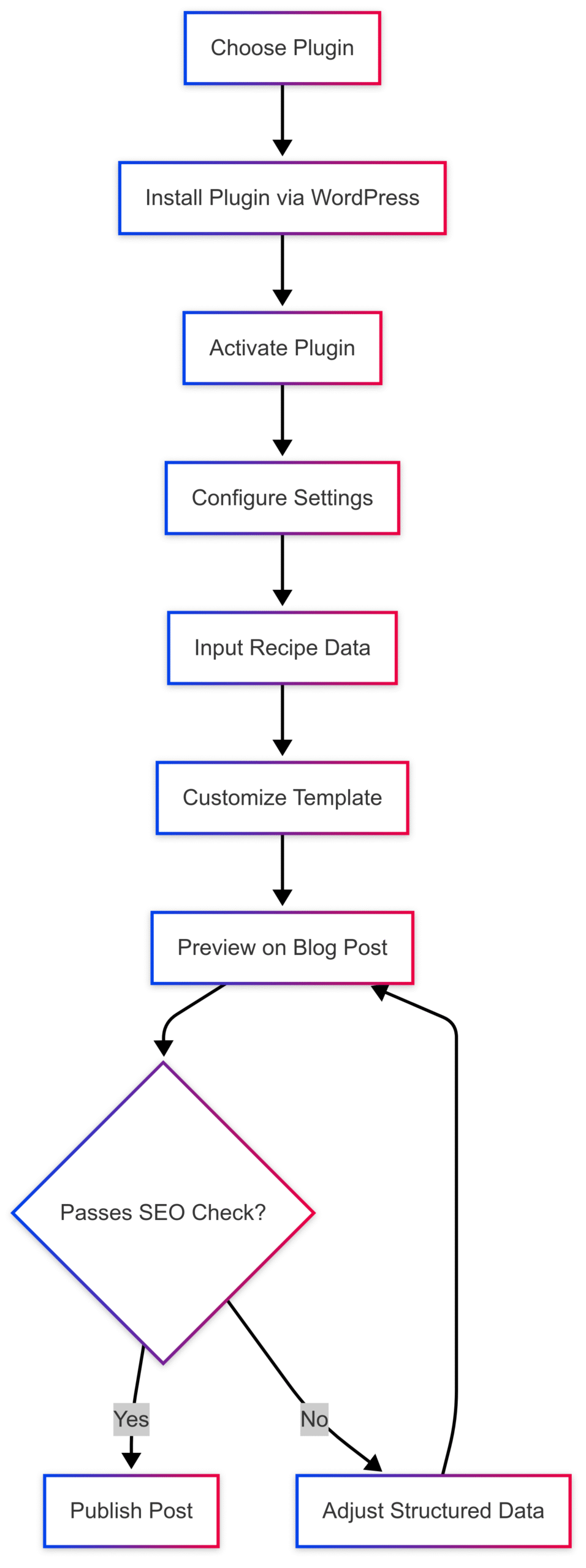7 Mistakes Food Bloggers Make When Writing Recipes
Food blogging is a dynamic blend of culinary creativity, storytelling, and technical precision. At its core lies the recipe—a roadmap for readers to recreate dishes in their own kitchens. However, even seasoned food bloggers can stumble when crafting recipes, leading to confusion, failed dishes, and frustrated readers. This comprehensive guide explores seven common mistakes food bloggers make when writing recipes, offering actionable solutions to elevate your content, enhance reader experience, and boost search engine visibility. By addressing these pitfalls, you’ll create recipes that are clear, reliable, and engaging, setting your blog apart in a crowded digital landscape.
Why Recipe Writing Matters
Recipes are the heartbeat of a food blog. They’re not just instructions; they’re promises of delicious outcomes. A well-written recipe builds trust with your audience, encourages repeat visits, and improves your blog’s search engine optimization (SEO) through structured data. Conversely, poorly crafted recipes can damage your credibility and drive readers away. According to a survey by the International Food Information Council, 68% of home cooks rely on online recipes, underscoring the importance of precision and clarity. Avoiding these seven mistakes will ensure your recipes resonate with readers and perform well on platforms like Google.
Mistake #1: Insufficient Recipe Testing
The Problem
One of the most significant errors food bloggers make is not testing recipes thoroughly before publishing. A single successful attempt in your kitchen doesn’t guarantee consistent results for readers. Variations in ingredients, equipment, or techniques can lead to wildly different outcomes. For example, a cake that turned out perfectly once might flop when recreated due to untested variables like oven temperature or ingredient ratios.
Why It Matters
Untested recipes risk disappointing readers, eroding trust in your blog. Negative feedback, such as comments about a “dry” or “tasteless” dish, can harm your reputation. Additionally, inconsistent results discourage readers from returning, impacting your blog’s traffic and engagement metrics.
The Solution
Test each recipe at least three to five times, adjusting variables systematically to ensure reliability. During testing:
- Use precise measurements: Weigh ingredients (e.g., grams for flour) to eliminate discrepancies.
- Vary conditions: Test with different brands of ingredients or kitchen equipment to mimic reader scenarios.
- Document changes: Track adjustments to pinpoint what works. For instance, if reducing sugar by 10% improves texture, note it.
- Recruit testers: Enlist friends or family to follow your instructions exactly, identifying unclear steps.
Example
Consider a chocolate chip cookie recipe. Test it with:
- Butter at room temperature vs. melted.
- All-purpose vs. bread flour.
- Different baking times (e.g., 10 vs. 12 minutes).
This ensures the recipe is robust and adaptable, increasing the likelihood of reader success.
Chart: Recipe Testing Workflow

Mistake #2: Disordered Ingredient Lists
The Problem
Listing ingredients in a random order or grouping them illogically confuses readers. For example, if a recipe calls for butter in step one but lists it after sugar used in step three, readers must hunt through the list, disrupting their cooking flow.
Why It Matters
A disorganized ingredient list frustrates readers, increasing the chance they’ll abandon the recipe. It also signals a lack of attention to detail, which can deter readers from trusting your content. From an SEO perspective, clear formatting enhances user experience, a factor Google prioritizes.
The Solution
List ingredients in the exact order they’re used in the instructions. Additional best practices include:
- Group by recipe component: For complex dishes (e.g., a layered cake), separate ingredients for the cake, frosting, and filling.
- Use precise measurements: Specify “1 cup chopped onions” rather than “1 onion.”
- Include preparation notes: Note if ingredients need prepping (e.g., “2 cups spinach, washed and chopped”).
Example
For a spaghetti carbonara recipe, list ingredients as:
- 4 ounces pancetta, diced
- 2 large eggs
- 1 cup grated Pecorino Romano cheese
- 12 ounces spaghetti
- 2 cloves garlic, minced
- Salt and black pepper, to taste
This mirrors the cooking sequence, streamlining the process for readers.
Mistake #3: Vague or Incomplete Instructions
The Problem
Ambiguous instructions leave readers guessing, increasing the likelihood of errors. Phrases like “cook until done” or “add a pinch of salt” are too subjective, especially for novice cooks. Similarly, omitting critical details—like the size of a baking dish or heat level—can derail the recipe.
Why It Matters
Vague instructions lead to inconsistent results, frustrating readers and prompting negative feedback. Clear, detailed instructions are also essential for SEO, as search engines favor content that answers user queries comprehensively.
The Solution
Write instructions with precision and clarity:
- Specify quantities: Use exact measurements (e.g., “1/4 teaspoon salt” instead of “a pinch”).
- Detail equipment: Mention tools like “8-inch round cake pan” or “medium saucepan.”
- Indicate doneness: Provide visual or measurable cues (e.g., “bake until golden brown and a toothpick inserted comes out clean”).
- Include timing: Note prep, cook, and total times, accounting for resting or chilling periods.
Example
Instead of: “Bake the chicken until done.”
Write: “Bake the chicken in a 375°F oven for 25–30 minutes, until the internal temperature reaches 165°F and the skin is crispy.”
Table: Common Vague Terms and Precise Alternatives
| Vague Term | Precise Alternative |
|---|---|
| Cook until done | Cook until internal temperature reaches 165°F |
| A pinch of salt | 1/4 teaspoon salt |
| Medium heat | Set stovetop to medium (about 4–5 on a 1–10 dial) |
| A handful of spinach | 1 cup packed fresh spinach |
Mistake #4: Ignoring Ingredient Substitutions
The Problem
Failing to provide substitution options limits a recipe’s accessibility. Readers may lack specific ingredients (e.g., buttermilk) or have dietary restrictions (e.g., gluten intolerance), leading them to improvise without guidance. Uninformed substitutions can ruin the dish, resulting in poor reviews.
Why It Matters
Offering substitutions makes recipes inclusive, catering to diverse audiences. It also demonstrates expertise, boosting your credibility. From an SEO standpoint, mentioning substitutions can capture additional search queries (e.g., “buttermilk substitute in pancakes”).
The Solution
Test and recommend substitutions for key ingredients, including:
- Dietary alternatives: Suggest almond milk for dairy or gluten-free flour for wheat.
- Pantry swaps: Offer baking powder for baking soda or honey for maple syrup.
- Allergen-free options: Recommend sunflower seed butter for peanut butter.
Include substitutions in the recipe card’s notes section or a dedicated blog post segment. Always test substitutions to ensure they work.
Example
For a buttermilk pancake recipe, note:
- Substitution: Replace 1 cup buttermilk with 1 cup milk mixed with 1 tablespoon lemon juice or white vinegar. Let sit for 5 minutes before using.
Mistake #5: Omitting Storage Instructions
The Problem
Many recipes lack guidance on storing leftovers, leaving readers uncertain about refrigeration, freezing, or shelf life. Without this information, food may spoil, or readers may improperly store dishes, affecting quality.
Why It Matters
Storage instructions enhance user experience by addressing practical needs, increasing the likelihood of repeat engagement. They also signal thoroughness, reinforcing your authority. Google rewards comprehensive content, so including storage details can improve SEO.
The Solution
Provide concise storage guidance in the recipe card or notes:
- Refrigeration: Specify duration (e.g., “Store in an airtight container in the refrigerator for up to 3 days”).
- Freezing: Note if applicable (e.g., “Freeze in a freezer-safe bag for up to 2 months”).
- Reheating: Suggest methods (e.g., “Reheat in a 350°F oven for 10 minutes”).
- Container type: Recommend glass containers or freezer bags for optimal freshness.
Example
For a lasagna recipe:
- Storage: Store leftovers in an airtight container in the refrigerator for up to 4 days. To freeze, wrap tightly in plastic wrap and aluminum foil; freeze for up to 3 months. Thaw overnight in the refrigerator and reheat at 350°F for 20–25 minutes.
Mistake #6: Failing to Attribute Recipe Inspiration
The Problem
Not crediting the source of a recipe’s inspiration—whether a restaurant dish, family recipe, or another blogger’s creation—can raise ethical concerns. It may also violate copyright if the recipe is adapted without acknowledgment.
Why It Matters
Proper attribution builds trust and fosters community within the food blogging world. It also protects you legally and enhances your blog’s reputation. Linking to original sources can improve SEO by creating valuable backlinks.
The Solution
Always credit inspiration sources:
- In the blog post: Mention the source (e.g., “Inspired by my grandmother’s classic apple pie” or “Adapted from [Blog Name]’s blueberry muffin recipe”).
- In the recipe card: Include a brief note with a link to the original source, if applicable.
- Be transparent: If you’ve modified a recipe significantly, clarify what changes you made.
Example
For a chili recipe:
- Attribution: “This recipe is inspired by the smoky chili served at [Restaurant Name], with my addition of black beans and a touch of cocoa powder for depth.”
Mistake #7: Not Using a Recipe Plugin
The Problem
Manually formatting recipes without a plugin results in inconsistent presentation and missed SEO opportunities. Recipe plugins generate structured data (JSON-LD Schema Markup), which helps search engines understand and display your recipes in rich snippets, like Google’s recipe carousel.
Why It Matters
Recipes without structured data are less likely to rank highly or appear in enhanced search results, reducing visibility. Plugins also improve readability, making recipes scannable and user-friendly. A study by Ahrefs found that pages with schema markup rank 4 positions higher on average.
The Solution
Use a reputable WordPress recipe plugin, such as:
- Tasty Recipes: Known for clean design and robust SEO features. Pricing: $49/year.
- WP Recipe Maker: Offers customizable templates and nutrition data integration. Pricing: Free (basic), $49–$149/year (premium).
- Create by Mediavine: Tailored for ad-monetized blogs with strong SEO tools. Pricing: Free for Mediavine publishers.
Install the plugin, input your recipe details, and customize the layout to match your brand. Ensure the plugin is compatible with the WordPress block editor (Gutenberg) for seamless integration.
Table: Comparison of Popular Recipe Plugins
| Plugin | Price (Annual) | Key Features | Best For |
|---|---|---|---|
| Tasty Recipes | $49 | SEO-friendly, clean design, video support | Beginner to advanced bloggers |
| WP Recipe Maker | Free–$149 | Nutrition data, customizable templates | Budget-conscious bloggers |
| Create by Mediavine | Free (Mediavine) | Ad integration, SEO optimization | Monetized blogs |
Chart: Recipe Plugin Integration Process

Additional Tips for Recipe Writing Success
Embrace Your Voice
Write recipes in a conversational tone that reflects your personality. Avoid overly formal language or generic phrases. For example, instead of “Combine ingredients,” say, “Toss everything into a big bowl and give it a good stir.” This makes your content relatable and engaging.
Proofread Rigorously
Spelling or grammatical errors undermine credibility. Use tools like Grammarly or Hemingway Editor to catch mistakes. Let drafts sit for a day before editing to spot issues with fresh eyes.
Optimize for SEO
Incorporate keywords naturally (e.g., “easy chocolate chip cookie recipe”) and use schema markup via plugins. Ensure your blog post includes:
- A compelling headline (score 70+ on CoSchedule’s Headline Analyzer).
- Alt text for images.
- Internal links to related recipes.
Stay Consistent
Post recipes on a regular schedule (e.g., weekly) to build audience trust and improve SEO. Use a content calendar to plan topics and maintain momentum.
Engage with Your Audience
Respond to reader comments and adapt recipes based on feedback. If readers request vegan options or quicker prep times, consider creating variations to meet their needs.
Technical Considerations for Food Bloggers
Beyond recipe writing, technical aspects of your blog can amplify your success. Here are key areas to address:
Choose the Right Platform
WordPress is the gold standard for food blogs due to its flexibility and plugin ecosystem. Avoid platforms like Squarespace or Wix, which limit SEO control and recipe plugin integration.
Select a Reliable Host
A fast, secure web host ensures a smooth user experience and better SEO rankings. Recommended hosts include:
- Bluehost: $2.95–$13.95/month (beginner-friendly).
- SiteGround: $3.99–$10.69/month (reliable support).
- Cloudways: $14–$99/month (high performance for growing blogs).
Use a Food-Specific Theme
Themes like those from Feast Design Co. ($129–$249) are optimized for food blogs, offering recipe indexes and mobile-friendly designs.
Build an Email List
Start collecting emails from day one using services like MailChimp (free–$20/month) or ConvertKit ($9–$29/month). Offer a free resource (e.g., a recipe eBook) to entice sign-ups.
Conclusion
Writing recipes is both an art and a science, requiring creativity, precision, and technical savvy. By avoiding these seven mistakes—insufficient testing, disordered ingredients, vague instructions, missing substitutions, omitted storage details, improper attribution, and neglecting recipe plugins—you’ll create recipes that delight readers and rank well on search engines. Implement the solutions outlined, from rigorous testing to SEO-friendly plugins, to elevate your food blog. Consistency, attention to detail, and a reader-centric approach will transform your recipes into trusted resources, fostering a loyal audience and a thriving blog.
For further resources, consider joining communities like Food Blogger Pro ($29/month) or exploring free SEO tutorials on Yoast’s blog. Your journey to mastering recipe writing starts with one well-crafted dish—make it count.
Please share this 7 Mistakes Food Bloggers Make When Writing Recipes with your friends and do a comment below about your feedback.
We will meet you on next article.
Until you can read, How to Organize Recipes by Category in a Food Blog






